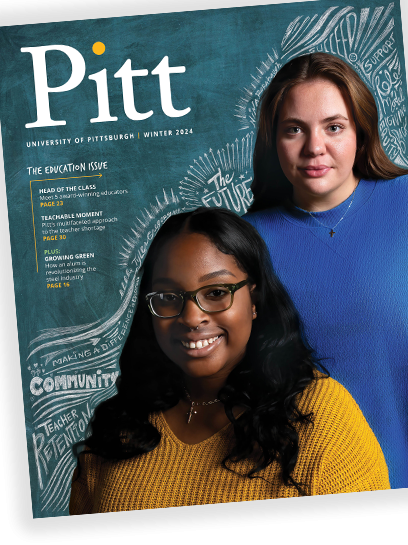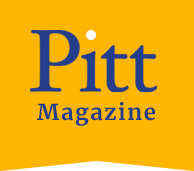
The student is frustrated. He’s been practicing cursive with Kelsey Voltz-Poremba, an occupational therapist and assistant professor in Pitt’s School of Health and Rehabilitation Sciences, but it’s still a struggle to form those dips and curves. He questions whether he’ll even use it in the future.

“If you want to have a job and cash your paycheck, you’re going to have to know how to sign your name,” she tells him.
The student scoffs. “Have you heard of a little thing called direct deposit?” he asks.
The story always makes Voltz-Poremba chuckle, but it also points to an attitude she believes is harming kids. As schools increasingly rely on technology in the classroom, the tapping of keys is replacing the pushing of pencils. And those two practices are not equal. That’s because handwriting is about more than just communication and legibility, Voltz-Poremba says. The very act of forming letters helps to imprint them in the brain, making learning the alphabet and reading much easier. In other words, it’s a crucial part of a child’s development.
If cursive is so important, why aren’t schools teaching it anymore?
It’s true many schools have wiped cursive from the curriculum over the years, believing it’s an outdated practice. But as more research emphasizes its developmental importance, Voltz-Poremba says schools are coming back around. For example, California just passed legislation that requires it be taught in all public schools.
What if cursive is a struggle for my child?
Let them print their letters, says Voltz-Poremba. The fluid nature of cursive is often easier for kids to master, but it’s not true for everyone. And printing is certainly better for development than typing, a repetitive movement that doesn’t differentiate letters. “I’m all for meeting a child where they are,” she says.
Where can I get cursive help for my child (or myself)?
There are plenty of good tutorials available online, but working with an occupational therapist is the gold standard. Voltz-Poremba and her students volunteer their time at the Community Engagement Center in Pittsburgh’s Homewood neighborhood, helping kids master cursive and bridge academic gaps.



